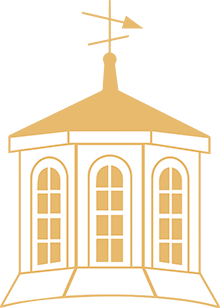RESEARCHING THE HISTORY OF A BUILDING IN CONCORD, NH
Prepared by Elizabeth Durfee Hengen, Historic Preservation Consultant, 2004, rev. 2011, 2015
Finding out more about the history of your building – when it was built and who has owned it – can be a fascinating process. Since many of the city’s older buildings have been inventoried already, it makes sense to check the inventory first, for basic information and a starting point for further research if desired.
1. Check the Concord historic building inventory to see if the property was surveyed. The inventory is filed at the:
o Public Library (Concord Room – ask reference librarian for assistance),
o New Hampshire Historical Society (NHHS) Library (4 Park Street),
o New Hampshire Division of Historical Resources (NHDHR, 19 Pillsbury Street – need to make appointment: 271-3483 or 271-6568). NB: This office has the most complete catalog of Concord inventory forms.
2. Check National Register of Historic Places nominations (available at NH Division of Historical Resources, Concord Room or NHHS). Again, NHDHR has the most complete files.
NB: Both the National Register nominations and the building inventory will soon be available on the web, accessed via the city’s web site.
3. There are a number of reports on historic neighborhoods and areas that have been completed over the years that may include information on the subject building. Examples include the Concord Airport, Airport Road, Concord Housing & Redevelopment/Urban Renewal Area, Main Street, and Kimball School neighborhood. Most of these reports can be found in the Concord Room and at NHDHR (see above).
If the building is not listed on the Register and has not been inventoried, you will need to start at the beginning:
1. Locate the building on Concord’s historic maps (at Concord Room and NHHS), published in 1827 (shows Main Street area), 1846 (Fisherville – now Penacook),
1851 (downtown and surrounding neighborhoods), 1858, 1868 (downtown and surrounding neighborhoods, as well as Penacook), 1875 (bird’s eye view of downtown and surrounding neighborhoods), 1886 (bird’s eye view of Penacook), 1892 and the various Sanborn fire insurance company maps, published variously 1869-1965.
2. If the map gives the name of the owner, look the owner up in the appropriate city directory (published nearly annually 1832 onward). The directory will give the owner’s address and occupation. Go backwards to see when the owner is first listed in the directory at that address. Directories published after 1930 are indexed not only by surname, but by street address.
3. Go to the Registry of Deeds and look up the earliest owner available in the grantee index to determine when he purchased the property (and if a building was standing then). Then look him up in the city directory for that year to determine his occupation.
You should now have good basic information, but there is always more to be gleaned. Try checking the following, in no particular order:
• Look the owner(s) up in the two major Concord histories by Bouton (1856) and Lyford (1903). The three-volume Concord history by Amsden (ca. 1940) titled “A Capitol for Concord” is also indexed and an excellent source for buildings constructed prior to1850. If your building is in Penacook, also try that history by Brown (1902). The more recently published Capital Views: A Photographic History of Concord; Village of Penacook: An Architectural and Historical View; The Village of West Concord; Concord Eastside: A History of East Concord; and A Bend in the River may also prove helpful.
All of these publications are in the Concord Room and NHHS, and some can still be purchased at NHHS or Gibson’s Bookstore. The Bouton, Lyford, Brown and Amsden histories are on the Concord Public Library’s web site.
• Look up the obituary for the person (Death dates are sometimes provided in the city directory of that year. They can also be obtained at the state’s Vital Records at Health and Human Services, Hazen Drive.)
• Check building permit files. Available at City Building/Code Dept. Permits were first granted ca. 1929 and are stored in files in the basement.
• Annual city reports frequently record construction of civic and some commercial and institutional buildings, particularly in the first half of the 20th century. They are in the Concord Room. Reports for years 1732-1925 are on the library’s website.
• Check US census records, including the agricultural schedules for farms (published 1850, 1860, 1870 and 1880). On microfilm at the State Library.
• Check the family genealogies at NHHS and State Libraries.
• Check probate records at the Registry of Probate
• Check the notable index at NHHS (most useful for prominent people)
• Check photograph files in the Concord Room, NHHS and NH Technical Institute library
• Check early 20th c. Concord Monitor indices at Concord Room and State Library
• Check plan files at the Registry (usually indexed by name of developer or owner filing plan, but sometimes by the engineer – most likely to yield information if the building was part of a subdivision or is relatively recent)
• And for 20th century history, don’t neglect to interview long-time neighbors or former owners
NB: To best determine the date of a building, the historical record should be complemented by a visual inspection of the building (often exterior will suffice) to be certain it was not replaced at some point, as that frequently is not reflected in the written record.

